Belgian Partners
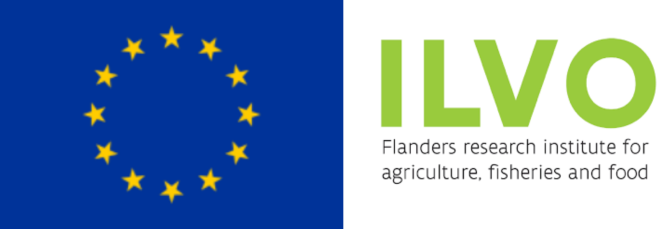
Flanders Research Institute for Agriculture, Fisheries and Food
ILVO is specialised in measuring and evaluating impacts of human activities on the North Sea ecosystem. This is done by assessing biodiversity, by studying emissions of organic and inorganic contaminants as well as plastics and by advising on marine spatial planning. ILVO is involved in different long-term monitoring projects, such as the impact assessment of offshore wind farms, dredge disposal or sand extraction, and many short-term projects on this topic. As these activities directly link to ecosystem management at national and international scales, ILVO has strong links with policy, especially related to EU MSFD and OSPAR.
ILVO will coordinate the Anemoi project. Through its role as coordinator, ILVO will be responsible for project management, including scientific and financial reporting, and for project communication and dissemination. ILVO will also have a major role in stakeholder engagement, supporting project partners SINTEF and POM West-Vlaanderen.
ILVO will actively contribute to the sampling at OWFs (WP2), sample division and transport (WP2), the determination of target organic contaminants from OWFs chemical emissions (WP2) and the non-target screening and assessment of new contaminants of emerging concern (WP2). ILVO will take a leading role in WP3, together with University Antwerp, mainly in leading the on-field exposure pilot study at the Belgian Part of the North Sea, including the design of the study as well as the measurements of organic chemicals and paint flakes.

Provincie West-Vlaanderen and VLAIO cofunded EV-ILVO in the Anemoi project.
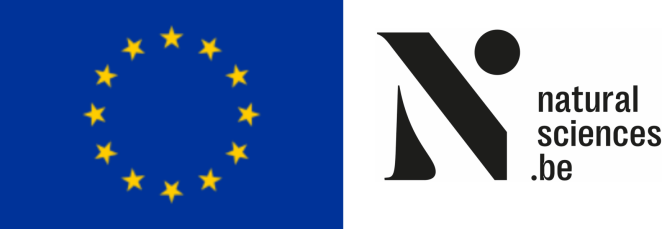
Royal Belgian Institute of Natural Sciences (RBINS)
The Institute of Natural sciences is a scientific institute active in a wide range of areas, including geology, biology, chemistry, ecology and nature/biodiversity conservation. The institute has extensive expertise on the marine environment. Research topics include marine pollution, sediment transport, eutrophication, remote sensing, oceanographic and ecosystem modelling, and biodiversity. Various related monitoring programmes are executed to monitor human pressures, evaluate their impact, and assess the state of the marine ecosystem as such linking research to policy and action, a key mission of the institute. The institute coordinates the monitoring programmes in Belgium for EU directives (MSFD, WFD & Natura2000) and effects of human activities, and manages the RV Belgica.
Within the Anemoi project, the institute is mainly involved WP2 which it is co-leading together with IFREMER. The Institute of Natural Sciences contributes to the sampling at OWFs with the RV Belgica, for which a dedicated sampling plan was elaborated. Further, the institute is responsible for analysing paint/coating particles extracted from sediment, using FTIR (and partially Raman). Therefore, it works in close collaboration with Hereon, analysing in seawater, and BSH adopting another identification method.
Further, the institute contributes to the regulatory overview and elaboration of recommendations within WP1 and is responsible for the analysis of organotin compounds in biota in the frame of WP3.

Provincie West-Vlaanderen cofunded RBINS in the Anemoi project.

POM West-Vlaanderen
POM West Flanders (POM-WVL) is a regional development agency in Belgium developing a sustainable and innovative economy in West Flanders by promoting partnerships between industry & SMEs, knowledge institutions, the public sector and the general public (in a quadruple-helix approach). Five cluster policies are being implemented, in alignment with regional, national and European strategies. One of these covers the Blue Energy sector, comprising of offshore clean energy, green hydrogen and a range of hybrid solutions (multi-use and multi-source applications in a marine environment), and materials development and innovation for offshore applications.
POM-WVL is an active partner in the Anemoi project and contributes with the its competences and experience in innovation acceleration, facilitating clean offshore energy development and making available an advanced offshore test facility. Another important activity is to deepen the engagement with the broader sectors in the blue economy, such as the fishery, the ports, transport, coastal communities and tourism.
POM-WVL contributes specifically in the following activities: Make biological effect testing and analyses possible at the test facility Blue Accelerator and further offshore in the North Sea; facilitate in the stakeholder participation processes; and disseminate the project recommendations in different offshore energy sectors. With these activities POM-WVL expects to benefit via the co-development and application of the recommendations and to reach out to a wider network in the blue economy. Gaining deep knowledge and experience from this project helps POM-WVL to further strengthen the innovation landscape in offshore clean energy.

Provincie West-Vlaanderen and VLAIO cofunded POM West-Vlaanderen in the Anemoi project.

University of Antwerp
The University of Antwerp is a public University in Antwerp city of Belgium. Our university develops, provides access to and disseminate scientific knowledge through research, teaching and academic services to the community by observing academic freedom and responsibility. The ECOSPHERE research group ( in the Faculty of Science) spearheads the understanding of the bioavailability and effects of micro pollutants on organisms.
We have experience in the performance of ecotoxicity studies on both fresh water and marine organisms under controlled and field conditions. Further we have a long-standing experience in the measurement of biomarker responses of single toxicant as well as complex mixtures on a whole range of marine and fresh water organisms including algae, invertebrates and fish. Studies are performed at different levels of biological organisation ranging from the molecular level (e.g. gene expression) over biochemical and physiological levels (e.g. enzyme responses, respiration, swimming performance) until effects at the community (e.g. fish community structure) or even the whole ecosystem (e.g. ecosystem functioning).
Within this project we are mainly involved in work package 3 (Impact of chemical leachates from OWFs on aquaculture products and marine life). Our main activities include effect assessment of a battery of test organisms on 1) leachates of paintings and galvanic anodes; here we explore the responses of the blue mussel by measuring the scope of growth and 2) the toxicity responses of different species exposed to whole sediments; i.e. an amphipod, a polychaete and early life stages of a marine fish species and later, 3) mussels exposed in caged at the offshore windmill parks will be collected and scope for growth will be measured. At ECOSPHERE, we have a standing record of managing several EU co-funded and other international projects such as: (EU-PF7: ENNSATOX, PERFOOD); EU Interreg regional development funds: BERISP, Sullied Sediments; MSCA-ITN: INFLAME; JPI Oceans: EPHEMARE; CEFIC LRI: ECO20.2, ECO20-UA.
Participating in this project will result in collaborations with other European research groups. Additionally, it will increase our knowledge on the effects of offshore wind farms on aquatic organisms. Finally it will result in multiple publications and in a PhD, which will greatly contribute to the dissemination of the project outcomes.

VLAIO cofunded UA in the Anemoi project
Norwegian Partner
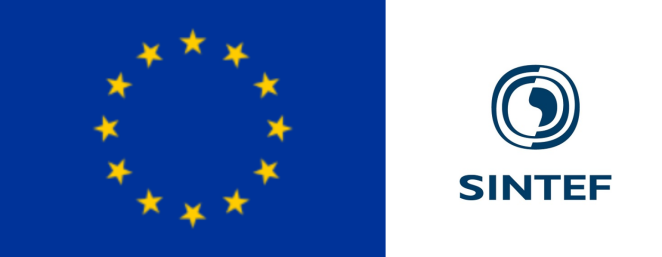
SINTEF Ocean
SINTEF Ocean, located in Norway, conducts research and innovation related to ocean space for national and international industries. SINTEF Ocean’s ambition is to continue Norway's leading position in marine technology and biomarine research. Many of the challenges of modern society can be solved through sustainable use of the ocean. Transport, food and energy production represent the backbone of ocean-based industries, and are also core areas for SINTEF Ocean. In addition, we focus on environmental technology, with one of the world’s leading professional environments in marine environmental technology. Through cooperation in the SINTEF group, we are also able to integrate our own expertise with expert technological knowledge from other industry sectors.
In the ANEMOI project, SINTEF Ocean helps to design workshops and meetings that facilitate a sharing of knowledge between project partners and project stakeholders, who work in various capacities with chemical emissions from offshore wind farms. SINTEF also contributes to WP2 of ANEMOI with non-target organic chemical analysis and characterisation of seawater leachates produced from a range of OWF infrastructure coatings.
Danish Partner
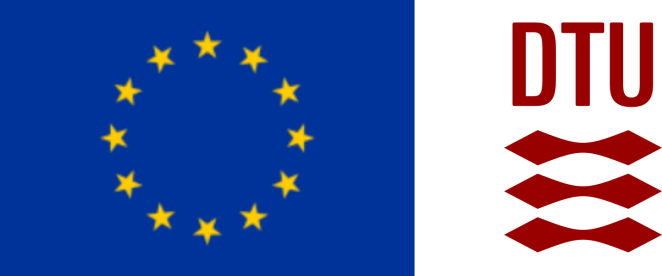
Technical University of Denmark
DTU develops technology for people. With our international elite research and study programmes, we are helping to create a better world and to solve the global challenges formulated in the UN’s 17 Sustainable Development Goals. Hans Christian Ørsted founded DTU in 1829 with a clear mission to develop and create value using science and engineering to benefit society. That mission lives on today. DTU has 13,500 students and 6,000 employees. We work in an international atmosphere and have an inclusive, evolving, and informal working environment. DTU has campuses in all parts of Denmark and in Greenland, and we collaborate with the best universities around the world.
DTU Wind and Energy Systems is one of the largest and most well-known university department for wind energy in the world with 250 employees. The institute is in the international driving field with a unique integration of research, education, innovation and public / private government service. DTU Wind Energy has extensive expertise in wind turbine technology, focusing on the impact of loads, structural design and reliability, aeroelastic design and materials.
The primary focus and main contribution of DTU Wind Energy is investigating the design optimization of the various corrosion protection systems used in offshore wind farms. The aim is to evaluate different corrosion protection systems in terms of chemical material emissions, efficiency, and cost, and subsequently recommend the most sustainable corrosion protection solutions for offshore wind farms.
Dutch Partner
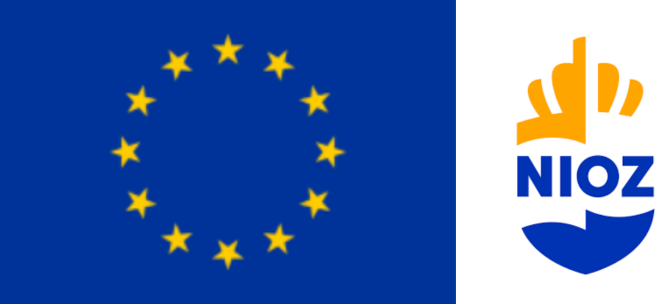
Royal Netherlands Institute for Sea Research
NIOZ, the Royal Netherlands Institute for Sea Research, is the national oceanographic institute and the Netherlands’ centre of expertise for ocean, sea and coast. We advance fundamental understanding of marine systems, the way they change, the role they play in climate and biodiversity, and how they may provide sustainable solutions to society in the future.
NIOZ participates in WP3 (Effects of chemical contaminants) with lab experiments to investigate ecotoxicological effects on marine organisms (in particular mussels) such as effects on metabolism, endurance and physiological condition. NIOZ will also implement these effects in a numerical biogeochemical ecosystem model to perform scenario studies to estimate potential exposure levels on filter-feeding organisms and secondary effects on the wider ecosystem induced by the resulting changes in filter feeder performance.
French Partner

French National Institute for Ocean Science - IFREMER
French leading institute in research, innovation and scientific policy support in marine science. The specific competencies gathered in IFREMER’s Research Unit on Chemical Contamination of the Marine Ecosystems (CCEM) are particularly relevant for the project. Some examples are the work on chemical contaminant (i.e. organic contaminants) dynamics in the marine environment and their transfer towards and into marine organisms and biological effects. These activities involve the development and implementation of trace/ultra-trace level analytical methods for contaminant quantification in key environmental compartments (e.g. sediment, water, organisms), the identification and quantification of spatial-temporal trends of chemical contamination and the study of bioaccumulation and biotransformation processes. IFREMER implication and work in ANEMOI will be done through CCEM Research Unit, as co-leader of WP2 (Mapping of chemical emissions). Involvement in WP3 (effects of chemical contaminants) is also foreseen.
German Partners

Federal Maritime and Hydrographic Agency of Germany
BSH is the central maritime authority in Germany supporting the blue economy, promoting the sustainable use of the ocean and observing the state of the seas. Services include forecasting currents and tides, water levels and storm surges, as well as observing sea ice, various pollutants and underwater noise, the state of sediments and the effects of climate change. Among others, BSH operates the marine environmental monitoring network MARNET in the German Bight and the western Baltic Sea and is responsible for maritime spatial planning and for authorising the construction of offshore wind farms (OWFs), cables and pipelines within the German exclusive economic zone (EEZ). Hereby, a major goal is to work towards “zero emissions” in this spatial area.
Based on data derived from long-term monitoring, BSH has generated a huge data set on current concentrations of contaminants within the German EEZ and coastal areas. To gain more information on potential chemical emissions from corrosion protection systems of OWFs, BSH initiated the OffChEm I & II project in collaboration with the Helmholtz-Zentrum hereon in 2017. In these projects, suitable sampling strategies and analytical methods to determine chemical emissions from corrosion protection were developed, inorganic (harmful) substances were identified and their relevant influence on the local and regional marine environment was evaluated.
Within the Anemoi project, BSH has the lead for WP1 due to its experience on chemical emissions from OWFs as part of the issuing process in Germany. In collaboration with partners and national agencies, an overview on regulations with respect to chemical emissions from OWFs and a proposal for harmonization will be developed. In WP2, all sampling campaigns in the German North Sea will be conducted as part of the regular monitoring campaigns on BSH vessels. Furthermore, BSH is working in close collaboration with hereon and RBINS concerning the analysis of paint/coating particles in water and sediment. BSH will quantify particles in sediment samples using a Pyrolysis GC/MS approach. As part of WP1 and WP4, BSH will also support the collaboration with several stakeholders by holding one of the workshops and by taking on an advisory role.
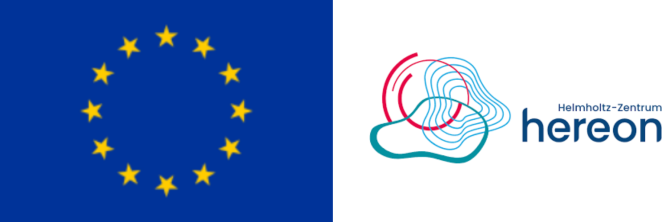
Hereon
Hereon is a member of the Helmholz Association, which consists of numerous research centers throughout Germany. The center focuses on research in earth and environment, particularly coastal systems, as well as materials sciences and information services. The Institute of Coastal Environmental Chemistry conducts research into novel and known pollutants, their sources, transport pathways via the coasts, and their dispersal into the marine and polar environments. The infrastructure available within the Institute is enables analysis of classic and novel organic pollutants, plus to analyses of numerous elements, stable isotopes and radionuclides as well as microplastics and nanomaterials. Additionally, modeling of the behavior and fate of pollutants is conducted through numerous projects.
The department of Inorganic Environmental Chemistry (KUA) is a member of the Anemoi project. The working group at Hereon uses modern chemical-analytical methods to investigate the occurrence, transport, fate, and effects of inorganic and novel particulate pollutants in coastal regions. Similar data have already been published via a number of projects, including the Coastal Pollution Toolbox. Within Anemoi, Hereon is responsible for the analysis of inorganic and particulate pollutants in environmental samples under WP2. The department brings experience in the topic from the OffChEm and OffChEm II projects (2017 – 2023) together with the German Federal Maritime and Hydrographic Agency (BSH), which investigated chemical emissions from offshore wind in the German North Sea.

Technische Universität Braunschweig
Technische Universität Braunschweig and its entity Leichtweiß-Institute for Hydraulic Engineering and Water Resources (LWI) have a longstanding research interest in offshore renewables. This is demonstrated through the joint operation of the Coastal Research Center in Hannover, Germany where engineering-focussed research on offshore renewables is a focal point. TU BS is also involved in research on energy storage, e.g. through low-head pumped storage applications along coastlines and in the ocean.
LWI of TUB joins the consortium as an academic partner that brings expertise in engineering-focused assessment of fluid-structure interaction and associated processes in marine contexts. In Anemoi, we conduct numerical simulations to enhance the understanding of distribution processes of solute and solid chemical components in the marine realm. A second activity looks at the detachment, sinking and mixing processes of paint flakes in the vicinity of offshore wind structures.